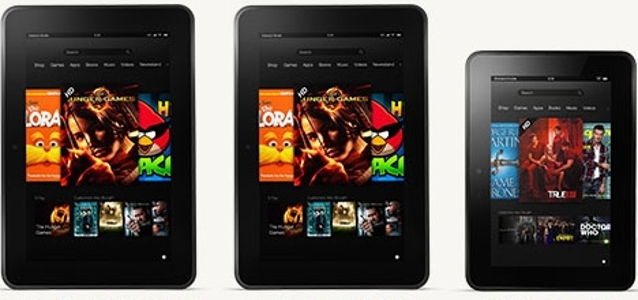
© amazon
Electronics Production |
Tablets make Ebook readers an endangered species
After spectacular growth during the last few years, the ebook reader market is on an alarmingly precipitous decline, sent reeling by more nimble tablet devices that have gained the ardent patronage of consumers, according to an IHS iSuppli Consumer Electronics Special Report.
Unknown to consumers before 2006, ebook readers saw shipments skyrocket for the next few years. From 2008 to 2010, shipments grew from 1.0 million to 10.1 million, up by a factor of 10. The market peaked in 2011, with 23.2 million units.
However, shipments of ebook readers by year-end will fall to 14.9 million units, down a steep 36 percent from 2011. Another drastic 27 percent contraction will occur next year when ebook reader shipments decline to 10.9 million units. By 2016, the ebook reader space will amount to just 7.1 million units—equivalent to a loss of more than two-thirds of its peak volume in 2011.
“The rapid growth—followed by the immediate collapse—of the ebook reader market is virtually unheard of, even in the volatile consumer electronics space, where products have notoriously short life cycles,” said Jordan Selburn, senior principal analyst for consumer platforms at IHS. “The stunning rise and then blazing flameout of ebooks perfectly encapsulate what has become an axiomatic truth in the industry: Single-task devices like the ebook reader are being replaced without remorse in the lives of consumers by their multifunction equivalents, in this case by media tablets. And while other uni-tasking devices—like digital still cameras, GPS systems and MP3 players—also face similar pressures and battle dim prospects ahead, all have had a longer time in the sun than ebook readers, demonstrating even more painfully the depth of the ebook reader’s fall.”
European reprieve?
Despite their challenges, the market for ebook readers remains strong in Eastern Europe, and Russia. There also exists a potential opportunity in regions such as Africa and India, where the power efficiency of ebook readers may make them more attractive, given ongoing power issues in those regions.
Sales prospects for ebook readers also could improve if prices drop further.
Tablets on the rise
In contrast to the ebook readers, tablets are enjoying unstoppable growth, mostly thanks to the Apple iPad, which made its appearance in 2010. Tablet shipments will hit 120 million units in 2012 only after two short years of the device being on the market, and 340 million systems are expected by 2016—a magnitude of sales exceeded only by mobile handsets.
The versatility of the media tablet—able to serve as a reader of emails as well as books, while capable of surfing the Web and playing movies—has even overcome the cost advantages of the ebook reader. Dissections made by the IHS iSuppli Teardown Service of a wide range of ebook readers and tablets alike confirm that ebooks are much less expensive to build. For instance, the 7-inch Amazon Kindle reader, released in late 2011, has a total bill of materials cost of $84, while the recently released Nexus 7 tablet from Asus is almost twice as high at $153.
Dime novels
To try to maintain their market, ebook readers are likely to continue to sell at manufacturing cost or even less in the future. Industry rumors speculate the Txtr Beagle reader, an ultra-low-cost model with a 5-inch screen, potentially selling for as little as $13 alongside operator subsidies in 2013—less than the cost of the display alone. Such extremely low pricing may serve to prolong the life of the ebook reader market for a little
while, IHS iSuppli believes, but the devices on the whole will not regain the popularity they once had.
For the manufacturers of ebook readers, the pressure to keep costs to an absolute minimum will be extreme, especially in cases where the system manufacturer is not also a content provider. In such a context, Amazon is more insulated than other ebook reader manufacturers, because the giant bookseller can recoup some of its losses through the huge sales generated from ebooks and other content available through its online store. Amazon is also not being caught empty-handed in the hardware arena, having morphed its Kindle ebook reader into the Kindle Fire media tablet.
The decline of the ebook reader market will translate into benefits for media tablet suppliers along their supply chains. The market for tablet displays, for instance, is expected to double from 2011 to 2014, reaching almost $10 billion.
Semiconductor shipments for tablets will show a similar pattern of robust growth. Total semiconductor consumption by tablets will top $20 billion by 2016—more than twice the amount in 2011—making the area one of the most lucrative opportunities for the overall chip industry.
Sadly for ebooks, which looked like the “Next Big Thing” just a few years ago, their moment of glory came and went all too quickly, the expectations of explosive growth suddenly quashed by the arrival of a much more agile—and insurmountable—rival.



